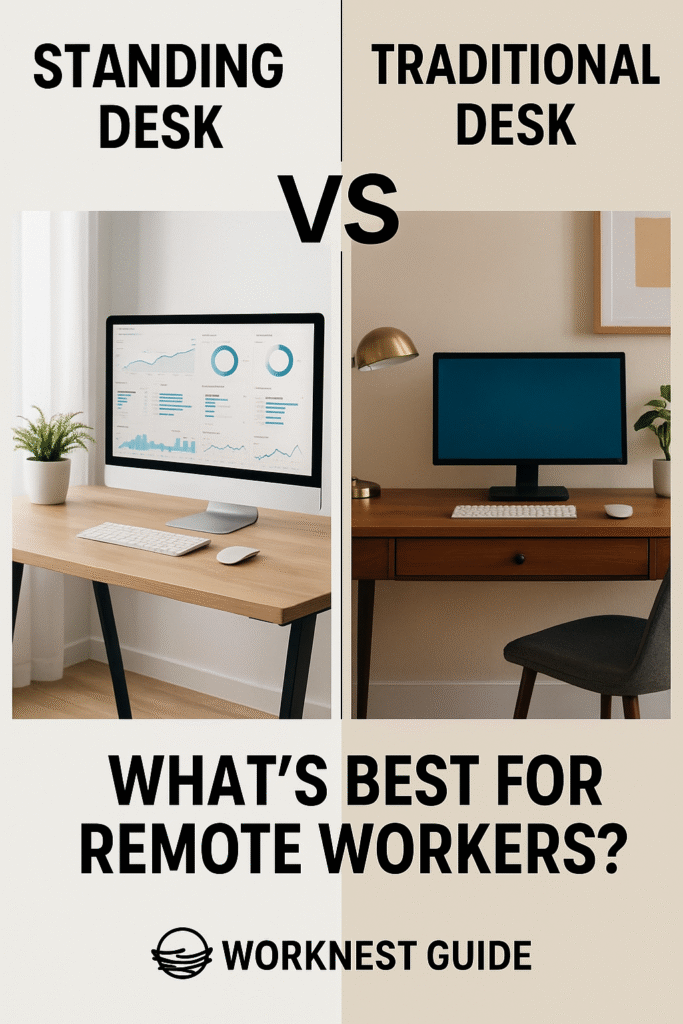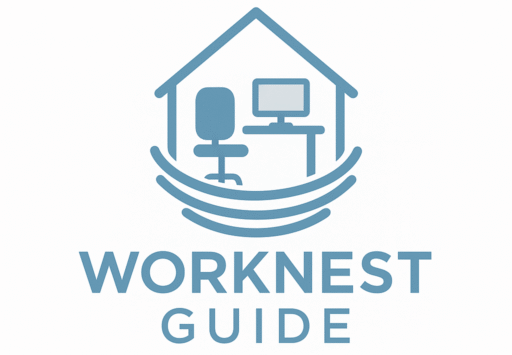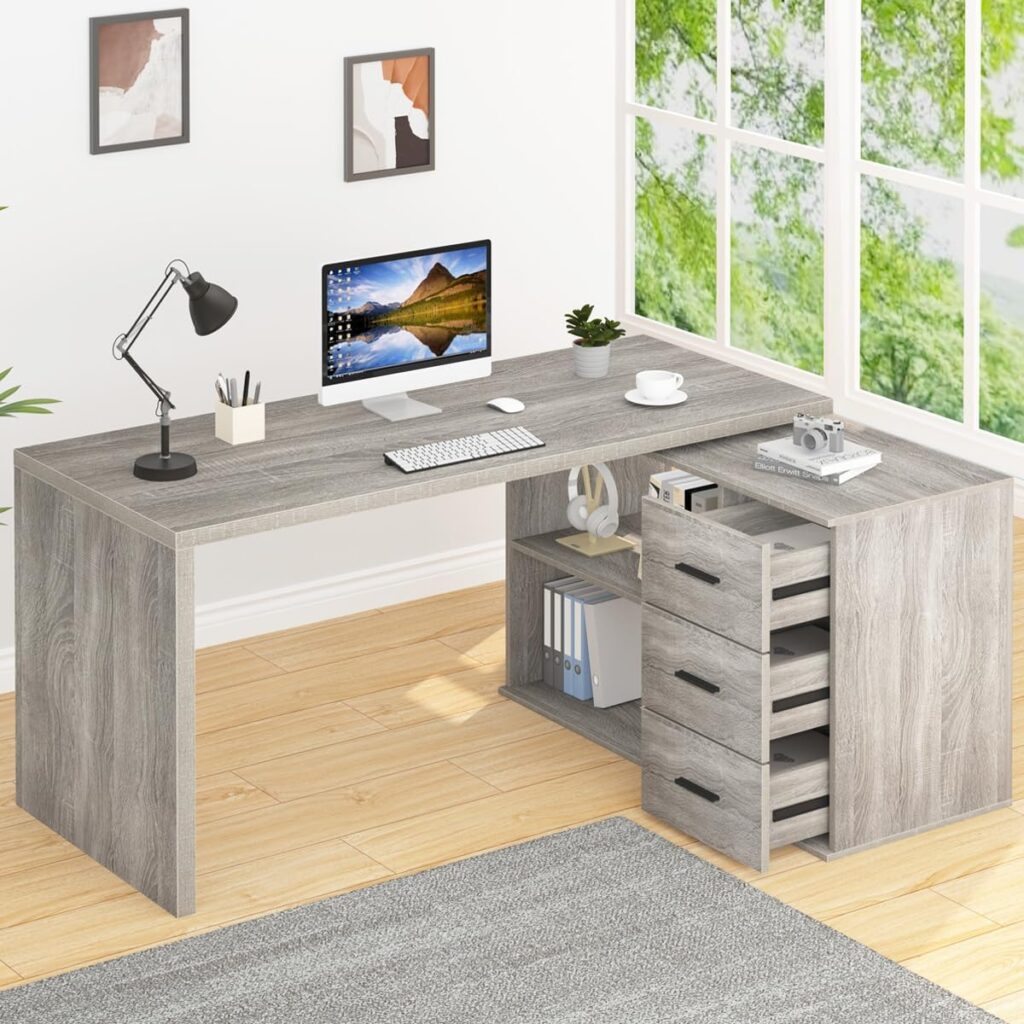Standing Desk vs Traditional Desk: What’s Best for Remote Workers in 2025?

Remote work has redefined how we approach productivity, comfort, and wellness in our home offices. One of the most debated upgrades in this new era is whether to invest in a standing desk or stick with a traditional sitting desk. Both offer unique benefits—and drawbacks—but which one is truly better for remote workers in 2025?
Let’s break down the differences to help you decide which desk best fits your needs.
Why a Standing Desk is Gaining Popularity

Standing desks—also known as sit-stand desks or height-adjustable desks—are booming in popularity for several reasons:
- Health Benefits: Prolonged sitting has been linked to back pain, poor posture, and increased health risks. A standing desk encourages more movement and better posture, potentially improving long-term health.
- Boosted Energy and Focus: Many remote workers report feeling more energized and focused when using a standing desk throughout the day.
- Customizable: With electric or manual height adjustments, you can shift between sitting and standing effortlessly, which reduces strain on any one part of your body.
Check out our blog post on the 10 Best Standing Desks for Small Spaces (2025 Edition) if you’re ready to explore top-rated options.
The Case for Traditional Desks
Despite the buzz around standing desks, traditional desks remain a staple for remote work—and for good reason:
- Affordability: Traditional desks often come at a lower cost than height-adjustable options, making them more budget-friendly.
- Stability and Storage: These desks typically offer more built-in storage, drawers, and surface area, which is ideal for multi-monitor setups or paperwork-heavy jobs.
- Aesthetic Versatility: Traditional desks come in a variety of styles and finishes, from modern minimalism to rustic wood, like those featured in our Top 10 Modern Desks for 2025.
Productivity Comparison: Which Is More Effective?
Studies show that alternating between sitting and standing throughout the day yields the highest productivity. A standing desk allows for this flexibility, while traditional desks require workarounds like adding risers or using standing desk converters.
For those who thrive with movement, a standing desk paired with an anti-fatigue mat can be a game-changer. However, some people feel more grounded and focused when seated comfortably in a supportive chair—see our picks for the Best Office Chairs Under $300.
Ergonomics and Comfort: Standing Desk Wins (When Used Right)
The ergonomic benefits of a standing desk come down to posture and setup. When used with the right monitor height, keyboard position, and supportive footwear, standing desks can help reduce discomfort caused by long hours at your computer.
Still, ergonomics isn’t exclusive to standing desks. A properly set up traditional desk with a high-quality chair and monitor riser can provide just as much support.
Check out our guide on Desk Accessories That Actually Improve Productivity to upgrade either setup.
Budget Considerations
While standing desks used to be expensive, 2025 has seen a surge in budget-friendly electric and manual options. If you’re on a tight budget, you might consider a standing converter to get the best of both worlds.
Pair your budget-friendly desk with affordable upgrades from our list of Home Office Essentials to complete your setup without overspending.
So, Which One Should You Choose?
- Choose a Standing Desk if:
You want more flexibility, improved posture, and long-term health benefits. Ideal if you’re working long hours and want to avoid sitting all day. - Stick with a Traditional Desk if:
You need more storage, have budget constraints, or prefer seated tasks. It’s still a solid option with the right ergonomic chair and layout.
Final Thoughts
There’s no one-size-fits-all answer. The best desk depends on your needs, work habits, and personal comfort. That said, more remote workers are shifting toward hybrid setups with the option to sit when needed.
Ready to upgrade your workspace? Start with our full Home Office Setup Guide for Beginners to build a remote workstation that fuels productivity and comfort.









